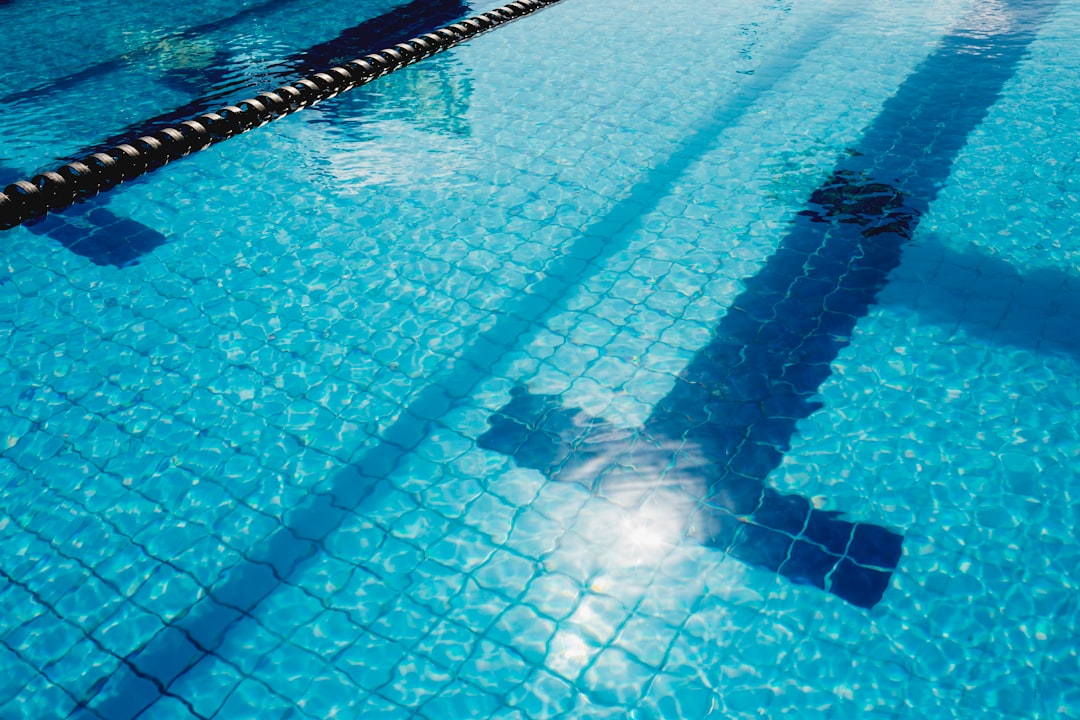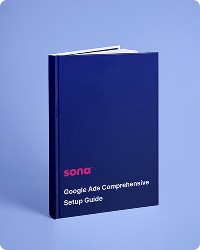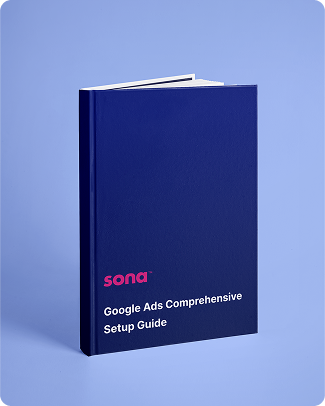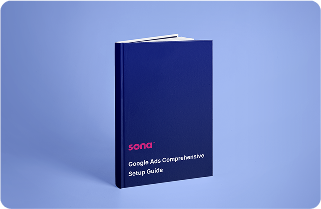

Engage prospects with a scan and streamline customer engagement with FREE QR code marketing tools by Sona – no strings attached!
Create a Free QR CodeFree consultation

No commitment

Engage prospects with a scan and streamline customer engagement with FREE QR code marketing tools by Sona – no strings attached!
Create a Free QR CodeFree consultation

No commitment
Pool cover repair services face a rapidly changing landscape as digital transformation sweeps through even the most traditionally offline service industries. Today’s customers expect convenient, seamless interactions, from requesting diagnostics on a damaged cover to reviewing service options, without paper forms, delayed callbacks, or guesswork on repair costs. All too often, however, valuable prospects slip through the cracks. High-intent homeowners may browse flyers or vehicle signage without ever submitting a request, leaving businesses with incomplete insights and missed opportunities.
For many pool cover maintenance and repair providers, the challenge is not just in delivering top-notch service, but in capturing, converting, and nurturing an audience that moves fluidly between offline triggers and online action. Teams need to prevent lost leads, accelerate response times, and ensure consistent follow-up. QR codes offer a straightforward, cost-effective way to drive immediate online engagement from physical touchpoints like inspection signage or service labels. They help surface otherwise anonymous interest and turn it into trackable, actionable demand.
Whether enabling quick estimates for automatic pool cover repairs, guiding homeowners to maintenance tips, or activating follow-up offers with a scan, QR codes close the gap between offline intent and digital action. The result is fewer manual errors, faster responses, and stronger customer satisfaction. This article explores how pool cover repair services can integrate QR codes into the customer journey, amplify revenue opportunities, and capture insights that support smarter marketing and operations, all while addressing common issues like missed prospects, slow response, and inconsistent messaging.

QR codes connect every offline interaction, such as a service brochure, an on-site inspection report, or a poolside sticker, directly to digital next steps. When prospects encounter traditional materials that ask them to call or email later, many never do. In the absence of automation and on-the-spot engagement, pool cover repair providers see homeowners compare options without converting and leave no digital trace, which prevents timely follow-up. QR-enabled touchpoints replace outdated processes like paper maintenance request forms or manual sign-up sheets with instant, trackable actions.
To get started, identify where customers hesitate or drop off. For example, a homeowner who notices frayed webbing or a noisy reel may hesitate to call a number on a postcard. If that postcard includes a QR code to a 60-second estimate form, the hesitation becomes a low-effort action. The same principle applies to invoices, equipment labels, and seasonal reminder cards. Each scan shortens the distance between interest and conversion.
Modern QR management platforms like Sona QR enable pool cover repair services to design, deploy, and track every code. They bridge visibility gaps, automate CRM sync, and reduce manual handoffs so that no interested customer remains anonymous or unengaged.
Pool cover repair teams have long struggled with issues like missing high-value prospects, poor visibility into anonymous traffic, and delayed follow-up. Because much of the business still originates from offline touchpoints, these gaps are common. QR codes transform printed assets into digital triggers that support instant engagement and offline attribution.
When used well, QR codes deliver convenience for customers and speed for teams. In urgent situations, a homeowner can scan, describe the issue, upload a photo, and receive a call back without searching for contact details or waiting on hold. For providers, dynamic QR codes keep materials current, and analytics show which local placements perform best, allowing you to reallocate budget with confidence.
Applied to pool repair scenarios like appointment cards or billboards near community pools, QR codes allow customers to move from awareness to action in seconds. Providers gain reliable insight into which assets are working, not just which assets exist.
Choosing the right QR format aligns the scan experience with the customer’s task. In pool cover repair services, many scans should route to forms or guides that reduce friction and collect the details needed to help. Others can streamline contact and support. Matching format to use case ensures the experience feels intuitive.
Dynamic QR codes are valuable in this vertical because information changes with seasonality, promotions, and repair backlogs. A dynamic code used on a truck wrap can lead to a seasonal landing page in summer and a winterization guide in fall, all without altering the physical asset.
For pool cover repair teams, web link formats that route to estimate forms and feedback pages are often highest impact. Pair them with short, mobile-first pages that require minimal typing and support photo uploads to accelerate triage.
Growth often hides in underutilized touchpoints. In pool cover repair, many opportunities are physical and local. Homeowners notice your trucks, see your service stickers near their equipment, or receive invoices in email or on paper. Each moment can become a measurable entry point to your funnel.
The key is to make the action obvious and worthwhile. Clear CTAs like Scan for a same-day estimate or Scan to schedule your annual safety check encourage immediate interaction. Over time, scan data will reveal which placements pull the most qualified leads, allowing you to invest smartly.
By turning these surfaces into digital onramps, you shorten your sales cycle, make attribution possible, and create a steady flow of data to guide decision-making.
Practical use cases are the backbone of an effective QR strategy. Focus on moments where a scan can replace friction with clarity, speed, and accountability. In pool cover repair, three use cases typically deliver strong outcomes across acquisition, service, and retention.
Use these examples as starting points and tailor them to your market and service mix:
Each of these use cases can be measured for scan-to-action conversion. With dynamic codes, you can A/B test CTAs and destinations, then standardize what works best.
Every QR scan can signal who the customer is, what they need, and when they need it. By deploying unique codes across journey stages, you can automatically segment audiences and tailor follow-up. This approach improves conversion efficiency and prevents blanket messaging that wastes budget, and supports intent-driven retargeting.
For pool cover repair services, intent distinctions often include emergency repair vs. scheduled maintenance, residential vs. commercial properties, and new leads vs. returning clients. Each category benefits from a different cadence and message. For example, emergency repair scans should trigger immediate SMS follow-up, while seasonal maintenance scans can join an educational drip with reminders and tips.
With Sona QR, each code becomes a smart entry point into your funnel. Scans feed tagged segments, which can trigger automations and ad retargeting. Over time, you can model which combinations of touchpoint and message deliver the best lifetime value.
QR codes are connectors. They bring your offline presence into your digital systems, creating a measurable pathway from a street-level impression to a booked job. When you integrate them across your channels, you improve customer experience, unify attribution, and give your team a consistent, trackable process.
Consider how a homeowner might encounter your brand across multiple media. They see your truck at a neighbor’s home, receive a seasonal postcard, and later notice a sticker by their own pool equipment. If every touch includes a QR that leads to a consistent landing experience with clear next steps, you create momentum that increases conversion odds while capturing data across each step.
Centralize your QR strategy with a platform like Sona QR so that you can manage codes, update destinations, and sync analytics to your CRM and ad platforms. This creates a single source of truth that connects all channels.
Launching a QR initiative is not complicated, but it is worth doing with intention so that you capture meaningful data, protect your budget, and deliver a great customer experience. The sequence below covers planning through optimization and can be adapted to companies of any size.
Start by anchoring each QR to a clear business outcome. Then design for the environment in which it will be scanned, and put measurement in place from day one. End by iterating based on performance so your campaigns get smarter over time.
Clarify the business goal and the customer action you want from a scan. Avoid generic codes that lead to a homepage. Instead, choose a focused use case such as same-day estimates from poolside signage or winterization bookings from direct mail. For example, Maximize high-intent lead capture from poolside signage to reduce wasted ad spend on passive or unqualified leads.
Decide whether you need static or dynamic codes. Static codes are fine for evergreen assets that will not change, like a permanent vCard. Most marketing and operational uses benefit from dynamic codes that support edits and analytics.
Design your codes to be noticeable, scannable, and trustworthy. Include your logo or brand colors and frame the code with a benefit-driven CTA. Then test thoroughly across devices and real-world conditions.
Roll out your codes where they will have the biggest impact based on your growth plan and historical conversion patterns. Keep messages consistent across channels, with variations tailored to placement and audience.
Measurement is where QR campaigns outperform traditional print alone. Use analytics to see more than just scan counts. Connect scans to lead quality, speed to first response, revenue, and retention.
A simple feedback loop turns QR into a growth engine. Small improvements in conversion and response time often deliver outsized returns in local service markets.
Surface-level metrics like scan counts are only the starting point. In pool cover repair services, the goal is to connect QR engagement to booked work, satisfied customers, and predictable retention. That requires unified tracking from first scan through invoice and review, with insights feeding back into your marketing and staffing decisions.
When analytics connect offline placements to online outcomes, you can see which channels produce profitable jobs and which placements underperform. This empowers you to shift budget with confidence, staff for peak demand, and target neighborhoods with the highest lifetime value.
With Sona QR and Sona.com, you can track every scan with time, device, and location metadata, measure engagement by channel and context, and respond in real time. Scan activity syncs to CRM platforms like HubSpot and Salesforce. Sona.com connects scans to revenue through identity resolution and multi-touch attribution, then unifies all touchpoints across the buying stages. The result is a direct line of sight from a neighborhood scan to a closed repair order.
Small changes in execution deliver significant gains in scan rate and downstream conversions. Focus on clarity of offer, relevance by placement, and end-to-end automation that keeps the momentum after the first scan. Invest in training so your field teams champion the QR experience during service visits.
Creative deployments often perform well in this vertical. Maintenance magnets for the equipment room, weatherproof vinyl stickers near the control box, or a QR-enabled loyalty card for seasonal inspections all reinforce your brand and make engagement easy when issues arise.
Automated QR management lets even small teams run sophisticated, data-driven programs without adding administrative burden. Over time, these practices reduce churn, increase review volume, and boost referral traffic.
QR codes are changing the way pool cover repair services engage, convert, and retain customers. Instead of static assets that provide little insight, every brochure, invoice, or equipment sticker becomes an active portal to digital actions and measurable outcomes. Repairs get scheduled faster, updates reach customers without reprinting, and follow-ups happen automatically. The operational benefits are matched by marketing improvements, since every scan adds to a clearer picture of what drives demand.
A robust, analytics-enabled QR strategy future-proofs your operation. It delivers instant engagement at the moment of need and turns offline attention into online action. That consistency across touchpoints builds trust, which leads to stronger retention and more referrals. When supported by platforms like Sona QR and Sona.com, your team can connect scans to revenue, remove guesswork, and scale what works. Start creating QR codes for free: Start creating QR codes for free.
The future of pool cover repair services is offline-to-online engagement at every touchpoint. By addressing missed leads, slow outreach, and disconnected campaigns, QR codes let repair firms operate with greater efficiency, measurable impact, and a client-first approach. Whether you are replacing outdated workflows or seeking a competitive edge in a crowded market, a well-crafted QR strategy backed by reliable analytics converts every scan into lasting business value and ensures high-fit prospects see the right message at the right time.
QR codes have revolutionized pool cover repair services by transforming routine maintenance and customer interactions into seamless, measurable experiences. They streamline access to repair histories, instructional videos, and service scheduling, enhancing customer satisfaction while boosting operational efficiency. Imagine instantly providing your clients with tailored repair guides or warranty details via a simple scan—making every interaction both informative and engaging.
With Sona QR, you can create dynamic, trackable QR codes that update in real time without the need for reprinting. This means you can effortlessly connect each scan to specific repair jobs, monitor customer engagement, and optimize your outreach strategies to attract new clients and retain existing ones. No more guesswork—just clear insights and stronger customer relationships.
Start for free with Sona QR today and turn every scan into a gateway for faster repairs, happier customers, and increased revenue in your pool cover repair business.
You can request a quick estimate or professional service by scanning QR codes found on poolside signage, invoices, or service trucks that link to prefilled repair forms, enabling fast scheduling and expert repair.
Common signs include frayed webbing, noisy reels, or damage noticed during seasonal inspections, which are key moments to use QR codes for immediate repair estimates or maintenance guidance.
Look for QR codes on local service trucks, pool equipment stickers, flyers, or direct mailers that connect you instantly to nearby pool cover repair providers and allow you to request service or estimates.
While costs vary, many pool cover repair services offer 60-second estimate forms accessible via QR codes that provide quick, transparent pricing tailored to your specific repair needs.
Utilize QR-coded maintenance guides and seasonal care tips found on equipment stickers or brochures to learn proper tensioning, track cleaning, and winterization, which help reduce damage and extend cover life.
Use Sona QR's trackable codes to improve customer acquisition and engagement today.
Create Your FREE Trackable QR Code in SecondsJoin results-focused teams combining Sona Platform automation with advanced Google Ads strategies to scale lead generation

Connect your existing CRM

Free Account Enrichment

No setup fees
No commitment required

Free consultation

Get a custom Google Ads roadmap for your business






Launch campaigns that generate qualified leads in 30 days or less.
